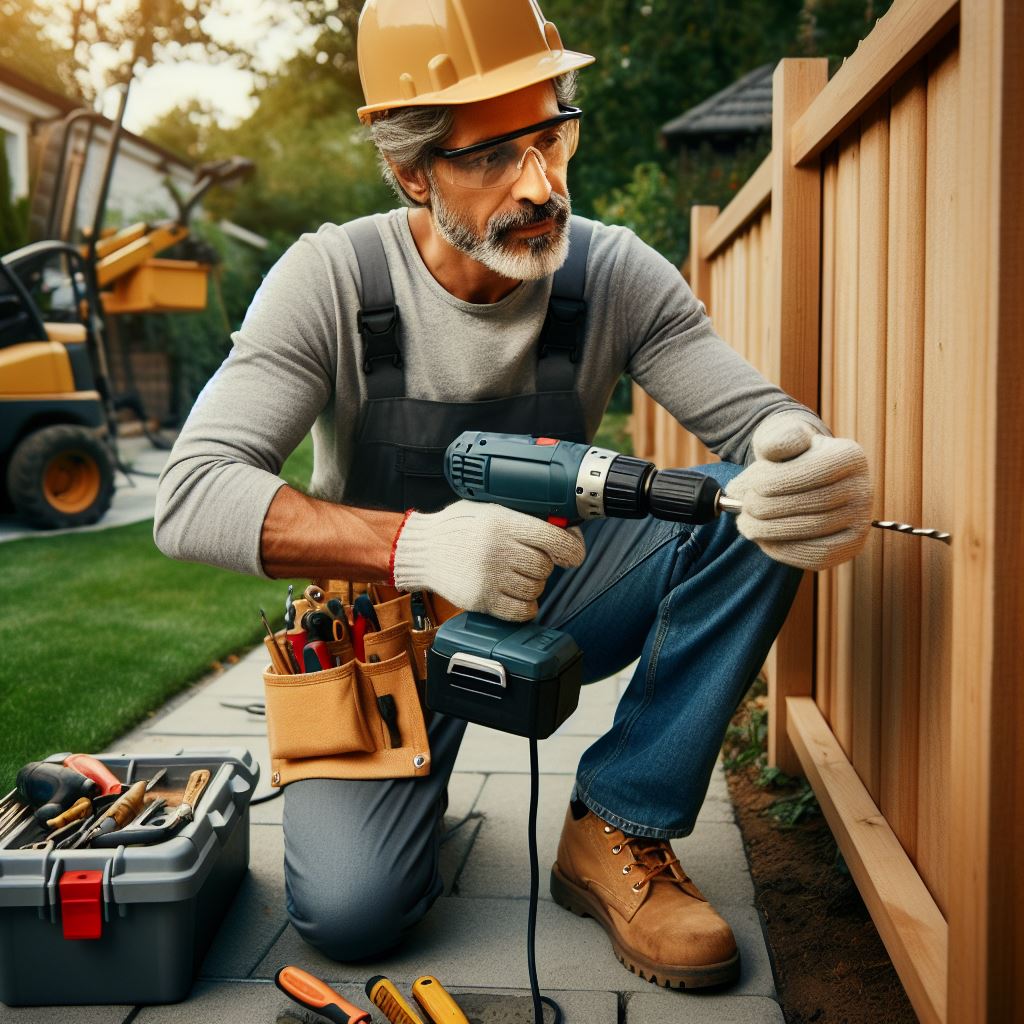Introduction
Rental inspections play a vital role in ensuring the safety and livability of rental properties.
These inspections are conducted by landlords, property managers, or housing authorities to assess the condition of the property and ensure compliance with various guidelines and regulations.
It is essential for landlords and tenants to be aware of the importance of staying compliant with rental inspection guidelines to avoid legal issues and maintain a positive renting experience.
Compliance with rental inspection guidelines is significant for both landlords and tenants.
Landlords need to ensure that their properties meet the necessary safety and health standards, protecting the well-being of the tenants.
It also helps landlords identify any maintenance or repair needs promptly, preventing them from worsening and potentially causing inconvenience or harm to the tenants.
For tenants, staying compliant with rental inspection guidelines ensures that their rights are protected.
It ensures that they live in a safe and habitable rental property, free from any hazards or health risks.
Following these guidelines also helps tenants maintain a good relationship with their landlords, as they demonstrate a responsible and cooperative attitude towards the rental property.
In fact, rental inspections are a crucial aspect of maintaining the quality and compliance of rental properties.
By staying compliant with rental inspection guidelines, both landlords and tenants can ensure a safe and satisfactory renting experience.
Understanding and following these guidelines will not only prevent legal issues but also promote a healthy and harmonious living environment.
Overview of Rental Inspection Guidelines in 2024
In the ever-evolving landscape of property management, staying abreast of the latest rental inspection guidelines is imperative for landlords and tenants alike.
As we step into 2024, several significant changes have been implemented, reshaping the way inspections are conducted and ensuring compliance with new policies.
Changes in Rental Inspection Policies
The modifications in rental inspection policies stem from a collective effort to strike a balance between protecting landlords’ interests and safeguarding tenants’ rights.
One notable change is the enhanced focus on tenant privacy, acknowledging the sanctity of their living space while still allowing for necessary inspections.
Key Aspects of the Guidelines
Frequency of Inspections
The frequency of inspections has seen a nuanced adjustment in 2024.
While routine inspections remain essential for property maintenance, there is now a heightened emphasis on providing tenants with reasonable notice.
This empowers tenants to prepare for inspections without feeling infringed upon, fostering a more collaborative landlord-tenant relationship.
Scope of Inspections
The scope of inspections has broadened to encompass not only structural elements but also environmental factors.
Landlords are now required to ensure that rental units meet health and safety standards, including adequate ventilation and pest control measures.
This holistic approach aims to create healthier living conditions for tenants.
Required Documentation
Documentation has become a focal point, with landlords mandated to maintain detailed records of inspections.
This includes photographic evidence of the property’s condition before and after inspections, offering transparency and protection for both parties in case of disputes.
Potential Penalties for Non-Compliance
Stricter penalties for non-compliance have been introduced to ensure adherence to the guidelines.
These penalties serve as a deterrent, encouraging landlords to uphold the standards set forth.
Fines, temporary suspension of rental operations, and potential legal action may be imposed in cases of persistent non-compliance.
In fact, the rental inspection landscape in 2024 is characterized by a balance between accountability and tenant rights.
Understanding and adhering to these guidelines is not just a legal obligation but a commitment to fostering positive landlord-tenant relationships and creating safer, healthier living environments.
Read: Emergency Repairs 101: Quick Fixes for Homeowners
Understanding the Purpose of Rental Inspections
Rental inspections play a pivotal role in maintaining a healthy, safe, and legally compliant living environment for tenants.
As we navigate through 2024, it becomes increasingly important for landlords and property managers to grasp the multifaceted purpose of these inspections.
Ensuring the Health and Safety of Tenants
At the core of rental inspections lies the commitment to tenant well-being.
Regular assessments provide an opportunity to identify and rectify potential health hazards promptly.
From checking for mold and pest infestations to ensuring the proper functioning of smoke detectors, landlords can proactively address issues that might compromise the safety of their tenants.
With the ongoing emphasis on public health, inspections also serve as a means to verify compliance with health and sanitation standards, especially in the context of global events that demand heightened attention to cleanliness.
Identifying and Addressing Maintenance Issues
Maintenance problems, if left unattended, can escalate into significant concerns.
Rental inspections empower landlords to pinpoint maintenance issues early on, preventing them from evolving into expensive repairs.
From leaky faucets to malfunctioning HVAC systems, a thorough inspection allows for a comprehensive assessment of the property’s condition.
Proactive maintenance not only enhances the overall living experience for tenants but also safeguards the property’s long-term value, reflecting positively on the landlord’s investment.
Preventing Potential Legal Disputes
Navigating the legal landscape of property rentals requires diligence and foresight.
Regular inspections act as a crucial documentation tool, providing a clear record of the property’s condition at specific points in time.
This documentation can be invaluable in case of disputes regarding security deposit deductions or disagreements over property conditions.
Staying ahead of potential legal challenges through systematic inspections fosters transparency, contributing to a harmonious landlord-tenant relationship.
In short, understanding the purpose of rental inspections goes beyond mere compliance; it is a proactive approach to creating a secure, well-maintained living space that benefits both landlords and tenants alike.
As we move forward in 2024, embracing these inspection guidelines becomes not only a legal necessity but a commitment to fostering thriving and resilient rental communities.
Read: Energy Efficiency Laws and Your Rental Property

Preparing for rental inspections
Conducting regular self-inspections
Conducting regular self-inspections is essential to ensure your rental property meets all necessary standards and requirements.
As a landlord, it is your responsibility to maintain a safe and habitable environment for your tenants.
Schedule regular self-inspections to identify any issues that may need attention or repair.
These inspections should cover all areas of the property, including common spaces and individual units.
Be thorough in your inspections, checking for any potential hazards or violations of health and safety regulations.
Maintenance and repair issues promptly
Timely maintenance and repair are critical to keeping your rental property in compliance with inspection guidelines.
Regularly inspect the property for any maintenance or repair issues, such as leaky faucets or broken appliances.
Promptly address these issues to prevent them from escalating into more significant problems.
Failure to address maintenance and repair issues can lead to violations and potential legal consequences.
Communicate with your tenants regularly to ensure they report any maintenance or repair needs promptly.
By addressing these issues promptly, you can maintain a positive relationship with your tenants and prevent further damage to the property.
Documenting repairs and improvements
Documenting repairs and improvements is crucial for demonstrating compliance during rental inspections.
Keep detailed records of all repairs, including the date, nature of the repair, and the contractor or technician involved.
Additionally, document any improvements you make to the property, such as installing energy-efficient appliances or upgrading security measures.
These records not only demonstrate your commitment to maintaining a safe and habitable property but also provide evidence of compliance with inspection guidelines.
Maintain both physical and digital copies of these documents for easy access during inspections.
Creating a checklist for the upcoming inspection
Creating a checklist before the upcoming inspection can help ensure you don’t miss any crucial areas or tasks.
Include all areas of the property that will be evaluated, such as electrical systems, plumbing, and structural elements.
Break down each area into specific components or items that need to be checked or addressed.
Your checklist should also include any additional requirements specific to your location or rental property.
By creating a comprehensive checklist, you can systematically address each item and increase your chances of passing the inspection successfully.
In summary, preparing for rental inspections requires conducting regular self-inspections, addressing maintenance and repair issues promptly, documenting repairs and improvements, and creating a checklist.
By following these guidelines and staying proactive in property management, you can maintain compliance with rental inspection requirements and provide a safe and habitable environment for your tenants.
Read: Landlord-Tenant Law: Key Changes in US States
What to expect during a rental inspection
Arrival of the inspector
When the day of the rental inspection arrives, you can expect the inspector to show up at your property.
Inspectors usually arrive on time, so it’s important to be prepared and ready to welcome them into your rental unit.
They might be carrying various tools and equipment necessary for inspecting different aspects of your property.
Areas of the property to be inspected
During a rental inspection, the inspector will thoroughly examine various areas of your rental property.
This includes checking the living spaces, bedrooms, bathrooms, kitchen, and any other areas included in the lease.
The inspector will also inspect the exterior of the property, including the yard, parking areas, and any shared spaces.
Testing of key utilities and systems
As part of the inspection, the inspector will test key utilities and systems in your rental unit.
This may involve checking the functionality of electrical outlets, plumbing systems, HVAC systems, and other utilities.
They might also test smoke detectors, fire alarms, and carbon monoxide detectors to ensure they are in working order.
Documentation of any violations or areas needing improvement
During the inspection, the inspector will document any violations or areas in your rental property that need improvement.
They will take notes and pictures to provide evidence of the violations or issues found during the inspection.
This documentation will be crucial for creating a report that outlines the necessary actions to rectify the violations.
Communication with the landlord/property manager
After completing the inspection, the inspector will communicate their findings with the landlord or property manager.
They will discuss any violations or areas needing improvement and provide recommendations on how to address them.
It is important for landlords and property managers to maintain open communication with the inspector to ensure compliance.
They can discuss any concerns, ask for clarification, and collaborate on resolving any issues that arise during the inspection.
Overall, rental inspections are essential to ensure the safety and well-being of tenants and the maintenance of the property.
By understanding what to expect during a rental inspection, both landlords and tenants can stay compliant with regulations.
It is crucial for landlords to schedule regular inspections and address any violations promptly to maintain a safe and habitable rental property.
Tenants should also cooperate during the inspection process and report any maintenance issues they notice to their landlord or property manager.
By working together, both parties can create a positive rental experience and ensure a well-maintained property for everyone involved.
Read: New Safety Regulations for Rental Properties in 2024
Tips for Staying Compliant with Rental Inspection Guidelines
Staying compliant with rental inspection guidelines is essential for landlords and property managers.
Not only does it ensure the safety and well-being of tenants, but it also avoids potential legal issues and financial penalties.
Educating Oneself about Local Regulations
Educating oneself about local regulations is the first step towards compliance.
This involves researching and understanding the specific guidelines in your area.
It is crucial to stay updated on any changes or new regulations that may come into effect.
Attending local workshops or seminars can provide valuable insights to enhance your understanding.
Establishing a Good Relationship with Inspectors
Establishing a good relationship with rental inspectors is beneficial in maintaining compliance.
Regular communication and a respectful attitude during inspections can help build trust.
If you have any doubts or concerns regarding the inspector’s findings, don’t hesitate to ask for clarification.
Showing willingness to make necessary improvements based on their recommendations demonstrates your commitment to compliance.
Maintaining Proper Records and Documentation
Maintaining proper records and documentation is another vital aspect of staying compliant.
Keep organized records of rental agreements, leases, and tenant information.
Document all maintenance and repair activities, noting dates and details.
Regularly inspect and maintain fire safety equipment and note records of inspections.
Taking before-and-after photos of property conditions can serve as evidence of compliance.
Regularly Updating and Improving the Property
Regularly updating and improving the property is crucial for long-term compliance.
Proactively inspecting for potential hazards and addressing them promptly is essential.
Making upgrades to improve energy efficiency and sustainability not only benefits tenants but also helps meet compliance standards.
Staying updated with building code changes and implementing necessary modifications is necessary.
Taking tenant feedback into consideration and addressing their concerns or requests for upgrades can contribute to compliance.
Furthermore, investing in regular inspections by certified professionals can help identify and fix any issues before they become compliance violations.
Upgrading security systems and ensuring their proper functioning is also important.
In essence, following these tips can help landlords and property managers stay compliant with rental inspection guidelines.
By educating oneself about local regulations, establishing good relationships with inspectors, maintaining proper records, and regularly updating and improving the property, you can ensure a safe and legal rental environment for tenants.
Consequences of non-compliance
Failure to address maintenance and safety concerns in rental properties can lead to severe consequences.
Landlords who do not prioritize compliance find themselves facing a range of unfavorable outcomes, including financial penalties, legal actions by tenants, damage to their reputation, and difficulties in attracting new tenants.
Fines and penalties
Regulatory authorities impose fines on landlords who fail to comply with rental inspection guidelines.
These fines can be substantial, potentially costing landlords thousands of dollars.
The amount of the fine depends on the severity of the violation and can increase with repeated non-compliance.
Potential legal actions by tenants
If tenants believe their rights have been violated due to non-compliance, they have the right to pursue legal action against their landlords.
Legal actions can result in landlords being held liable for damages and other legal remedies.
These lawsuits can result in significant financial burdens for landlords, who may have to pay compensation and legal fees.
Reputation damage
In today’s interconnected world, information about non-compliant landlords spreads quickly.
When a landlord fails to comply with rental inspection guidelines, their reputation can suffer.
This can lead to negative reviews, word-of-mouth warnings, and decreased interest from potential tenants.
Reputation damage is not easily repaired and can have long-lasting effects on a landlord’s business.
Difficulty in attracting new tenants
As a direct consequence of reputation damage, non-compliant landlords often struggle to attract new tenants.
Potential renters prioritize safety and compliance when choosing a rental property.
Landlords with a history of non-compliance may find it challenging to fill vacancies and may need to offer incentives to attract tenants.
All in all, non-compliance with rental inspection guidelines has serious consequences for landlords.
Fines and penalties can drain financial resources, legal actions by tenants can result in significant expenses, reputation damage can harm a landlord’s credibility, and difficulties in attracting new tenants can impact rental income.
It is crucial for landlords to stay updated on the guidelines and prioritize compliance to avoid these adverse outcomes.
By maintaining safe and compliant rental properties, landlords can mitigate the risks associated with non-compliance and ensure the success of their rental businesses.
Conclusion
Ensuring compliance with rental inspection guidelines is not merely a legal obligation; it is a fundamental aspect of responsible property management.
In 2024, staying compliant is more critical than ever.
It not only safeguards the interests of landlords but also promotes a healthy and habitable living environment for tenants.
Compliance fosters transparency, trust, and a harmonious landlord-tenant relationship.
The legal landscape surrounding rental properties is constantly evolving, with regulations adapting to the ever-changing needs of both property owners and occupants.
By staying compliant, property owners not only avoid legal ramifications but also contribute to the overall betterment of the rental housing sector.
This commitment ensures that properties are maintained to a high standard, promoting safety and well-being.
Throughout this blog post, we’ve delved into the intricacies of rental inspection guidelines for 2024.
We highlighted the evolution of these regulations, emphasizing the need for property owners to stay informed and adapt.
Key points included the significance of routine inspections, understanding local laws, and employing effective communication with tenants to streamline the inspection process.
Furthermore, we underscored the importance of documentation, urging landlords to maintain thorough records of inspections, repairs, and communications.
This not only provides a clear trail of compliance but also serves as a valuable resource in case disputes arise.
As we navigate the dynamic landscape of property management in 2024, it’s imperative for landlords and property managers to proactively take the necessary steps to ensure compliance with rental inspection guidelines.
This includes regular self-audits, ongoing education on changing regulations, and fostering open communication channels with tenants.
By prioritizing compliance, property owners not only mitigate legal risks but also contribute to the overall improvement of rental housing standards.
As we conclude, let us encourage every stakeholder in the rental property ecosystem to embrace a proactive stance towards compliance, fostering a rental environment that is both legally sound and conducive to the well-being of all involved parties.




